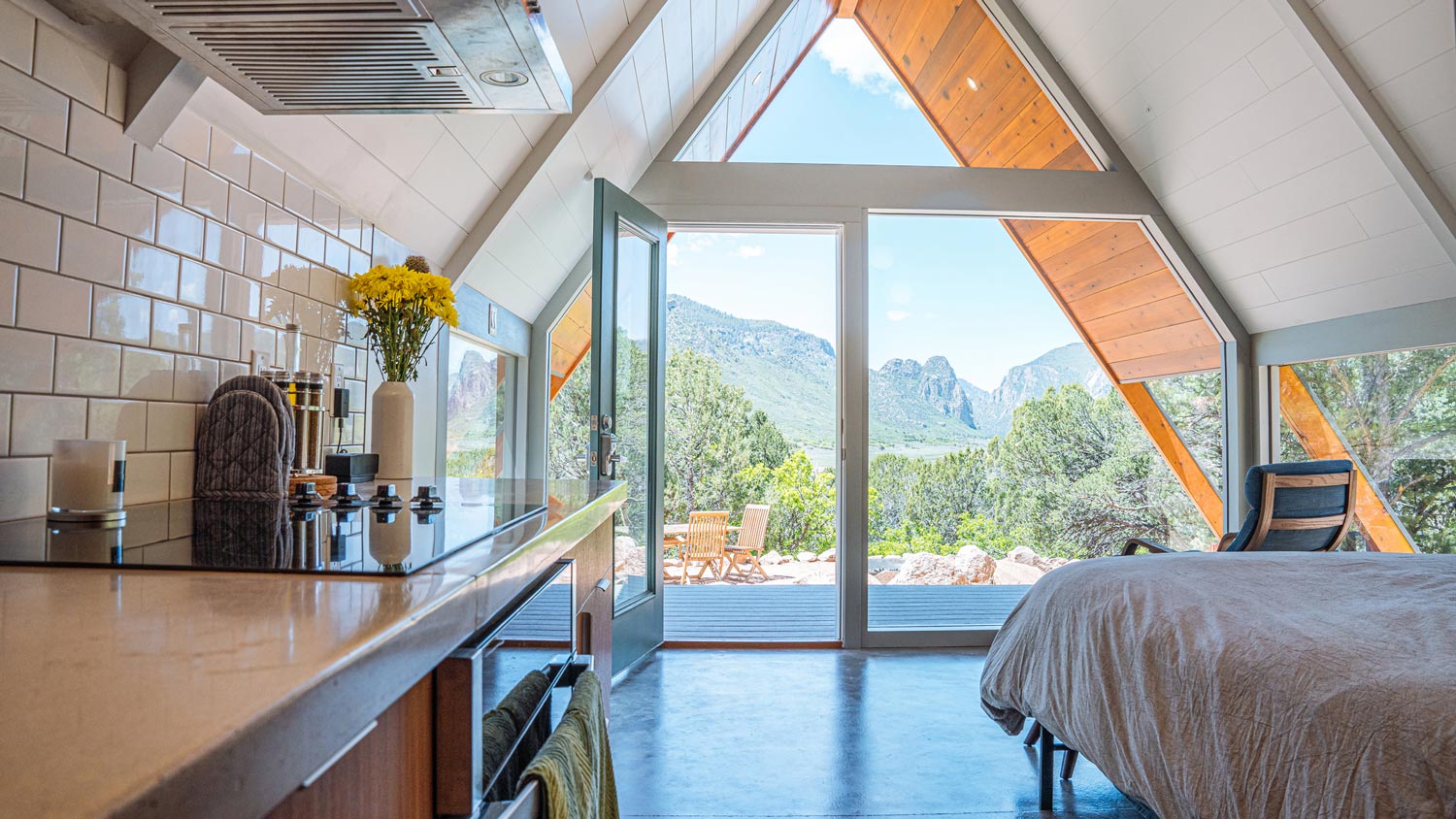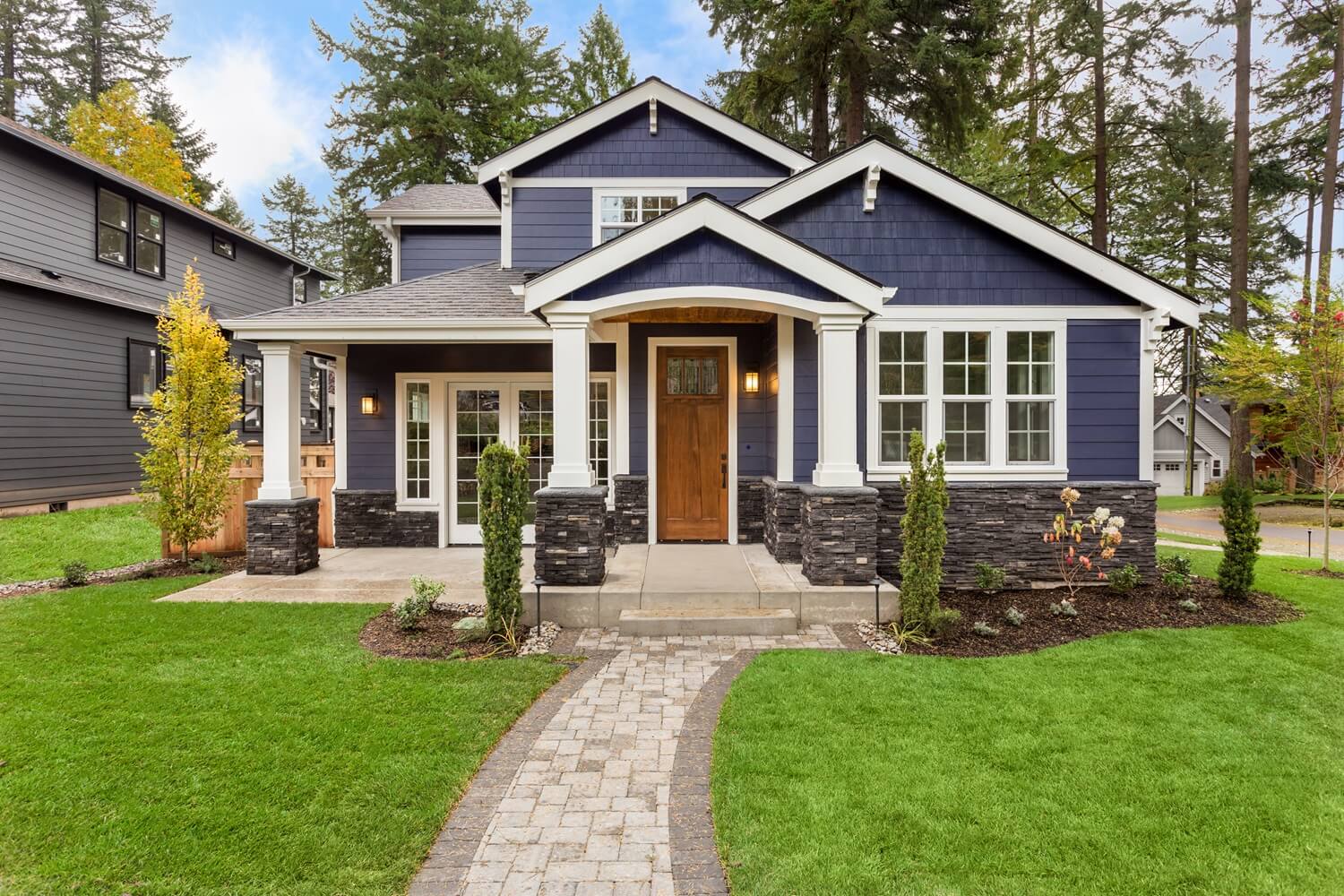
Discover the outbuilding cost for your property. Learn about average prices, cost factors, and ways to save when building or renovating an outbuilding.
The cost-saving and sustainability perks make this homebuilding alternative pretty fab


The term prefab homes refers to everything from tiny houses to modular homes.
Designers build prefab homes in a factory and then transport pieces to the property.
The cost of a prefab home ranges from $50,000 to $300,000.
The process has unforeseen costs like transport, land costs, and utility hookups.
If you've ever changed lanes on the highway because of a wide-load truck impressively carrying a house, you likely witnessed the transport of a prefabricated—or prefab—home.
Prefab homes began flourishing during the 19th-century gold rush in California, and since then they’ve developed into the mobile home, tiny home, and modular home movements. If you're considering building a home instead of buying one, it's important to understand the upsides and downsides of prefab homes.
A prefab home is the umbrella term for several types of pre-constructed structures. Construction companies design and build parts of the prefab home in a central factory, deliver the pieces to the plot of land, and then the home is assembled.
The process differs from "stick-built" or timber frame homes or the type of ground-up construction that we commonly associate with homebuilding. Instead of gathering a team of contractors and individual building materials at the build site, a central team will build parts or all of the structure in one locale, often with bulk-purchased materials.
Prefab homes run the gamut from drivable manufactured houses to A-frame homes that resemble a cozy log cabin. Here are the most common types of prefab homes you'll find today.
Modular Homes: Designers build homes in sections or rooms and connect them on-site like building blocks. Buyers can customize their home by combining different modules.
Panel and Kit Homes: These types of homes come in smaller pre-constructed sections than a module home, often either in panels or in a kit of individual pieces. These often require interior finishing after construction.
Manufactured (or Mobile) Homes: Builders complete a mobile home’s interior and exterior details before sale. The home is easily driven and moved on the road or within a housing development.
Shipping Container Home: The unique shipping container home transforms steel containers into fully livable spaces. Buyers customize the home by stacking and lining up multiple containers or adding an outdoor living space.
Tiny House: Tiny homes are either fully constructed in a factory or sent as a kit home. Their miniature size is ideal for easy movement and simple living.
A-Frame Home: Some common architectural styles lend themselves to prefab construction, including the triangular A-frame home with long, steep roofs.
Prefab homes cost about $40 to $300 per square foot, depending on the type. Here are the average costs you can expect:
Modular homes cost around $80 to $160 per square foot, while custom modular homes average $130 to $310 per square foot. Average add-on costs to the typical modular home include two-car garages for $28,000, basements for $18,000 to $30,000, and decks for $7,700.
Panel and kit homes cost about $40 to $60 per square foot. You’ll need to pay an additional $130 or so per square foot for labor unless you’re building it yourself.
Manufactured homes cost $60 to $120 per square foot on average. Single-wide homes start at $60,000, double-wide homes start at $120,000, and triple-wide homes are $200,000 or more.
A shipping container by itself costs between $1,500 and $6,000, depending on the size. On average, you can expect to pay $137,500 for the cost of a completed shipping container home with a foundation, HVAC, electrical, plumbing, and the like.
Tiny homes average $300 per square foot. Although the cost is higher per square foot than other prefab options, they’re generally more affordable because they’re smaller.

It's easy to assume that a premade house that has to trek across the highway is too costly, or unstable. But the sustainability, accessibility, and surprisingly lower cost draw in plenty of new buyers.
Not sure whether to pull the trigger on a prefab home? Consider the following benefits.
Faster construction: If you're looking for a move-in-ready home, prefabs are a great option. On average, a modular or kit home takes between four and six months to construct. Manufactured and tiny homes take even less time.
Sustainable perks: Since homes have to make the difficult journey to your construction site, they are often built with tighter seams and tighter construction than some stick builds. Sealed construction means lower heating and cooling bills—one of the larger pieces to maintaining a low-energy home. The carbon footprint of construction is often lower as well.
Lower cost than stick builds: Prefab homes cost an average of $50,000 to $300,000 while stick-built homes cost between $350,000 to $1,500,000. Prices vary depending on the type of prefab home, square footage, and special appliances, finishes, and other customization.
Don’t forget to consider the drawbacks of prefab homes when making your building plans.
Less customization: Companies sell prefab homes in a set series of predetermined designs and materials. While there are ways to customize modular and panel homes, it will cost you more to make the changes. A series of prefab homes in one area could make your choice look a bit cookie-cutter, but there are plenty of options in your home decor.
Transportation logistics: Not every street is ideal for pulling up with a wide, prefab home on a truck. Tightly packed city streets and utility wires make the tricky precarious, as do steep hills and narrow country roads. The transport of the prefab home can significantly shift the cost of the process depending on its size and style.
Unforeseen costs: When building any type of new home—prefab or stick-built—remember that you pay for things like the land itself, building permits, and the often-costly fee of hooking up utilities. The cost to hook up a new house to utilities is an average of $20,400.
Lower resale value: Talk with your real estate agent or home building company about the resale value of prefab homes. Prefab homes can lose value over time depending on the market, so they may not be an ideal starter home option if you plan to move in a few years.
Prefab homes offer many affordable, sustainable, and surprisingly flexible options for new and experienced home buyers. Not only will you be the first person living in the structure, but you have more flexibility on where to set up shop. Keep in mind that not all homeowners associations allow prefab structures, so double-check with your local laws before taking this route.
Whichever option you pick, always work with a trusted and experienced local custom home builder who can streamline the design, buying, and construction process of the prefab home that’s right for you.
Ginny Bartolone contributed to this piece.
From average costs to expert advice, get all the answers you need to get your job done.

Discover the outbuilding cost for your property. Learn about average prices, cost factors, and ways to save when building or renovating an outbuilding.

If home is where the barn is, a barndominium may be the dream house you’ve been looking for. Here are all the details you need to know about barndominium costs.

Find out the average cost to repair a greenhouse, key price factors, and ways to save. Get transparent estimates to plan your greenhouse repair project confidently.

From early blueprints to the final coat of paint, how long does it take to build a house? Let's walk through what to expect from the home-building timeline.

A villa can be a single-story house or a luxury home with a pool. Here’s a full breakdown of how much it costs to build a villa based on size and style.

Building a house is a complex process, and it’s important to get it right. Learn how to build a house to help make the process easier and more straightforward.